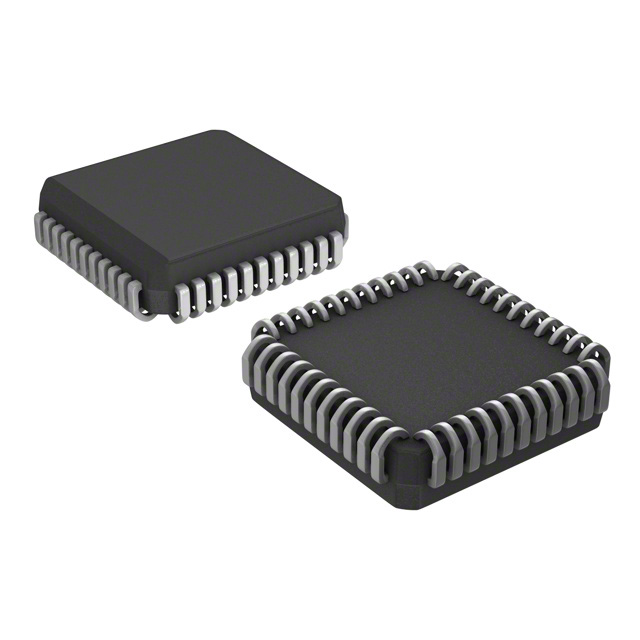AT89C51ED2-SLRIM
Product Overview
- Category: Microcontroller
- Use: Embedded systems, industrial automation, consumer electronics
- Characteristics:
- High-performance 8-bit microcontroller
- Low-power consumption
- Flash memory for program storage
- Integrated peripherals for versatile applications
- Package: SLRIM (Small Outline Integrated Circuit)
- Essence: AT89C51ED2-SLRIM is a microcontroller designed for various embedded system applications, offering high performance and low power consumption in a compact package.
- Packaging/Quantity: Available in tape and reel packaging, quantity varies based on customer requirements.
Specifications
- Architecture: 8-bit
- Clock Speed: Up to 33 MHz
- Program Memory: 64 KB Flash
- Data Memory: 2 KB RAM
- I/O Pins: 32
- Timers/Counters: 3
- Serial Communication: UART, SPI, I2C
- Analog-to-Digital Converter: 8 channels, 10-bit resolution
- Operating Voltage: 2.7V to 5.5V
- Operating Temperature: -40°C to +85°C
Detailed Pin Configuration
The AT89C51ED2-SLRIM microcontroller has a total of 44 pins. The pin configuration is as follows:
- P0.0
- P0.1
- P0.2
- P0.3
- P0.4
- P0.5
- P0.6
- P0.7
- RST
- P1.0
- P1.1
- P1.2
- P1.3
- P1.4
- P1.5
- P1.6
- P1.7
- XTAL1
- XTAL2
- GND
- VCC
- P2.0
- P2.1
- P2.2
- P2.3
- P2.4
- P2.5
- P2.6
- P2.7
- ALE/PROG
- PSEN
- EA/VPP
- P3.0/RXD
- P3.1/TXD
- P3.2/INT0
- P3.3/INT1
- P3.4/T0
- P3.5/T1
- P3.6/WR
- P3.7/RD
- AVCC
- AGND
- ADC0
- ADC1
Functional Features
- High-performance 8-bit microcontroller with a clock speed of up to 33 MHz.
- Flash memory for program storage, allowing easy reprogramming.
- Integrated peripherals such as UART, SPI, and I2C for versatile communication options.
- Built-in timers/counters for precise timing applications.
- Analog-to-Digital Converter (ADC) with 8 channels and 10-bit resolution for analog signal processing.
- Low-power consumption, making it suitable for battery-powered devices.
Advantages and Disadvantages
Advantages: - High-performance capabilities enable efficient execution of complex tasks. - Versatile communication options facilitate integration with various external devices. - Flash memory allows for easy program updates and modifications. - Low-power consumption extends battery life in portable applications.
Disadvantages: - Limited program and data memory compared to higher-end microcontrollers. - 8-bit architecture may not be suitable for certain computationally intensive applications.
Working Principles
The AT89C51ED2-SLRIM microcontroller operates based on the Von Neumann architecture. It executes instructions stored in its Flash memory, which can be modified using appropriate programming techniques. The microcontroller communicates with external devices through its I/O pins and integrated peripherals such as UART, SPI, and I2C. It utilizes timers/counters for precise timing requirements and incorporates an ADC for analog signal processing. The low-power design ensures efficient operation even in battery-powered applications.
Detailed Application Field Plans
The AT89C51ED2-SLRIM microcontroller finds applications in various fields, including:
- Embedded Systems: Used in the development of embedded systems for industrial automation, home automation, and automotive applications.
- Consumer Electronics: Integrated into consumer electronic devices such as smart appliances, remote controls, and wearable devices.
- Internet of Things (IoT): Enables connectivity and control in IoT devices, allowing them to interact with the physical world.
- Robotics
Senaraikan 10 soalan dan jawapan biasa yang berkaitan dengan aplikasi AT89C51ED2-SLRIM dalam penyelesaian teknikal
Sure! Here are 10 common questions and answers related to the application of AT89C51ED2-SLRIM in technical solutions:
Q: What is the AT89C51ED2-SLRIM microcontroller? A: The AT89C51ED2-SLRIM is a high-performance 8-bit microcontroller from Atmel, based on the 8051 architecture.
Q: What are the key features of the AT89C51ED2-SLRIM? A: Some key features include 64KB Flash memory, 2KB RAM, 4KB EEPROM, 32 I/O pins, UART, SPI, I2C interfaces, and multiple timers/counters.
Q: What are some typical applications of the AT89C51ED2-SLRIM? A: It can be used in various applications such as industrial automation, home automation, robotics, automotive systems, and consumer electronics.
Q: How do I program the AT89C51ED2-SLRIM microcontroller? A: You can use an In-System Programmer (ISP) or a compatible development board with a programmer/debugger to program the microcontroller.
Q: Can I use C language for programming the AT89C51ED2-SLRIM? A: Yes, you can use C language along with the Keil C51 compiler or other compatible compilers to write code for the microcontroller.
Q: What is the maximum clock frequency supported by the AT89C51ED2-SLRIM? A: The microcontroller can operate at a maximum clock frequency of 60 MHz.
Q: Does the AT89C51ED2-SLRIM support interrupts? A: Yes, it supports both external and internal interrupts, allowing you to respond to external events or timers.
Q: Can I interface the AT89C51ED2-SLRIM with other devices? A: Yes, the microcontroller has multiple communication interfaces like UART, SPI, and I2C, which can be used to interface with other devices.
Q: How do I debug my code running on the AT89C51ED2-SLRIM? A: You can use an In-Circuit Emulator (ICE) or a compatible debugger to step through your code, set breakpoints, and monitor variables during runtime.
Q: Is there any development board available for the AT89C51ED2-SLRIM? A: Yes, there are several development boards available that support the AT89C51ED2-SLRIM, providing easy access to its features and peripherals.
Please note that these questions and answers are general in nature and may vary depending on specific requirements and applications.


